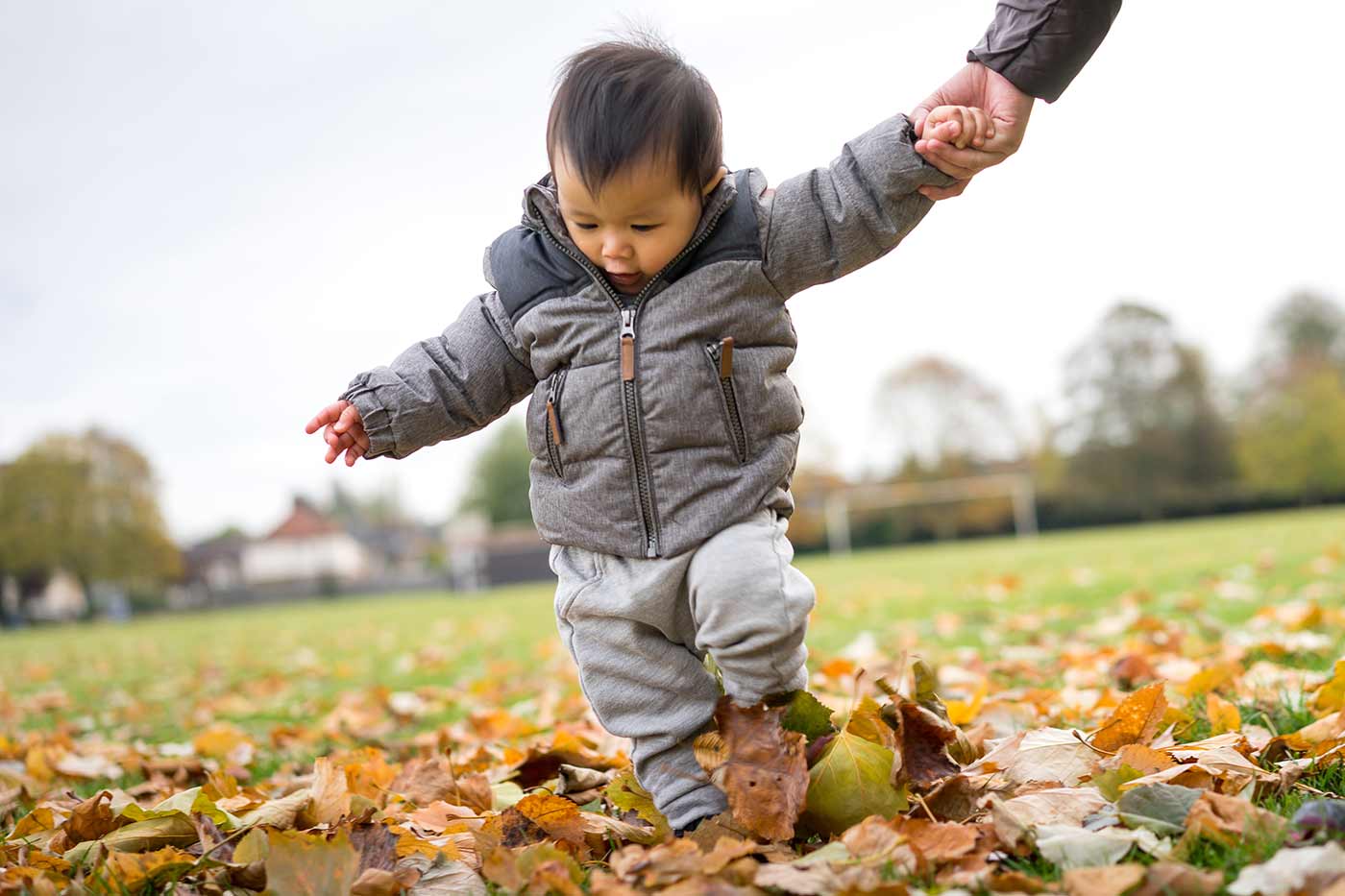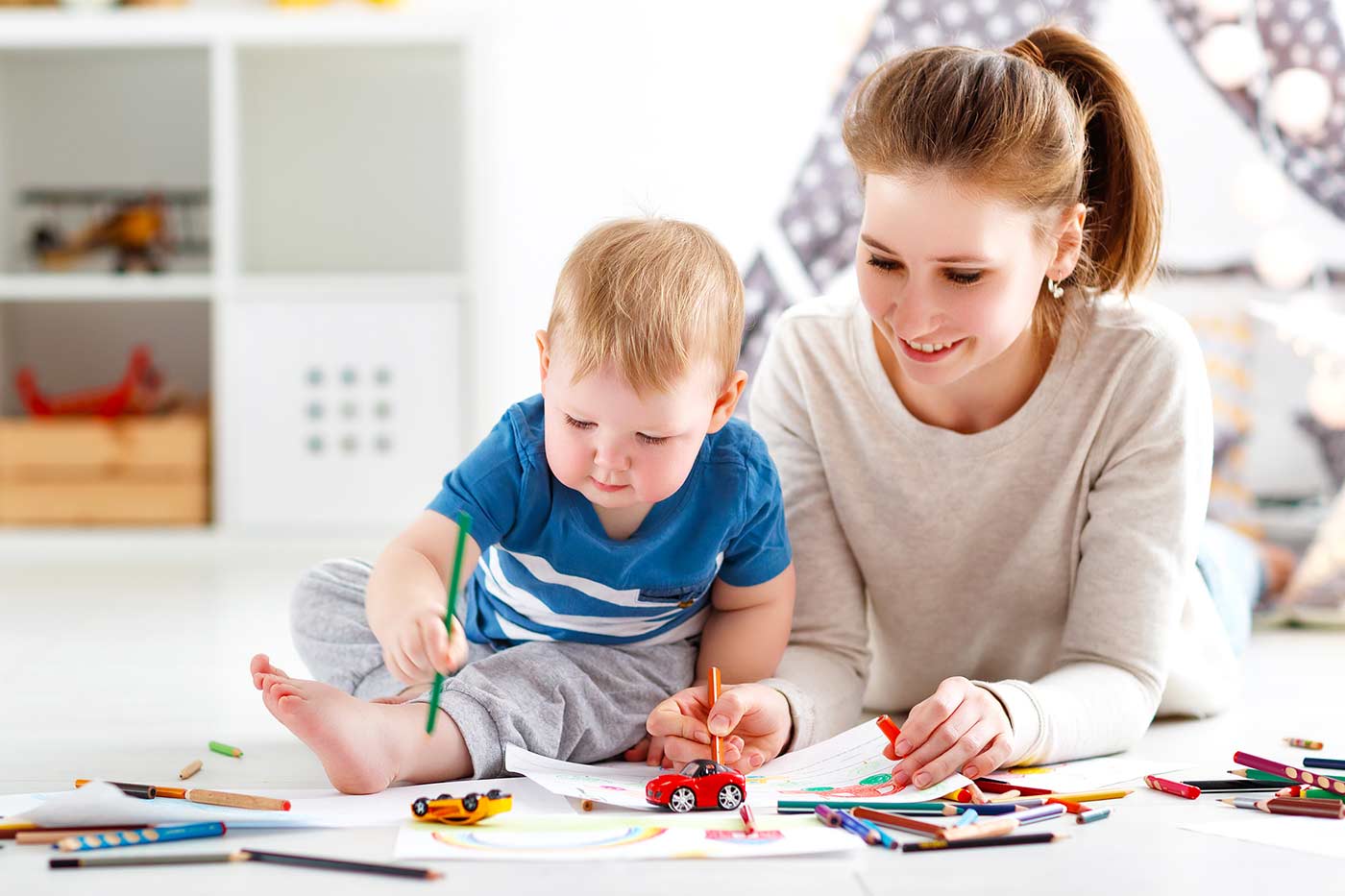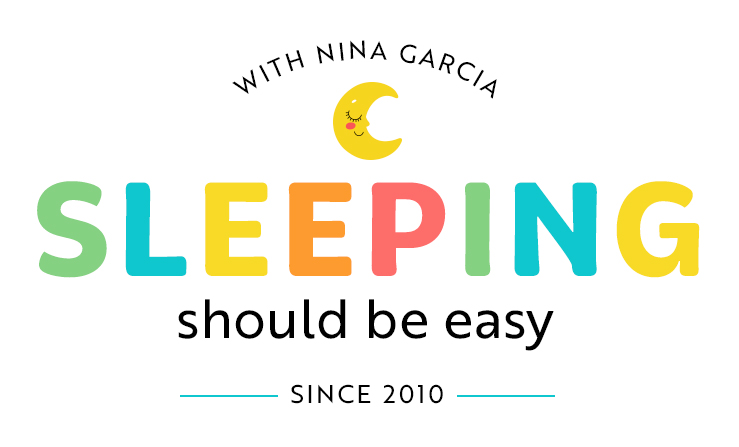What to Include in a Daily Routine for a 1 Year Old
Does your toddler need a change of schedule? Here’s what to include in a daily routine for a 1 year old, including sample schedules!
 Tell me if these words sound familiar:
Tell me if these words sound familiar:
“Am I playing enough with my toddler?”
“Should I go on daily outings?”
“Why can’t I keep up with laundry and meals?!”
If you’ve lacked a routine with your 1 year old all this time, it’s all too easy to question everything you do.
You feel guilty any time your toddler seems bored, despite trying to do plenty of activities together. Perhaps you’re experimenting with his schedule a bit (ahem: naps!) with little success. And no matter how hard you try to plan, you’re still rushing home to put dinner together and get him ready for bed.
Table of Contents
What to include in a daily routine for a 1 year old
I’ve long been a fan of daily routines, especially for young toddlers.
With the repetition of a routine, I didn’t have to think about what time my kids should wake up or whether we’d been going on too many outings. I was able to keep them engaged while still having plenty of time to tend to household tasks.
This isn’t to say that we couldn’t make spontaneous decisions (“Let’s go to the beach!”). But I found that the more predictable our days became, the more room we had to be flexible. We filled up our tanks with consistent activities enough to be open to surprises and adventures.
More importantly, routines kept my kids happy, well-fed, and well-rested. Whatever 1 year old tantrums and meltdowns they had were greatly eased by having a reliable routine.
So, what exactly should you include in a routine for kids this age? Below, I share a few common activities, as well as sample schedules for you to try:
1. Wake up time
Even if nap times vary day by day, keep wake up time as consistent as possible. For many of us, this is a must, especially if we have to go to work or take our kids to school or daycare. But even if it’s not a must, keep wake up time the same every day.
Why? This can help your toddler naturally wake up around the same time (instead of waking up at 5am when you’re still in bed). You can make sure he’s getting the 10-12 hours of sleep he needs every night. And you’re better able to plan your day knowing that he wakes up at the same time.
Free printables: Out of ideas on what to do with your little one? Join my newsletter and grab your printable calendar of fun and simple play activities! Check them off as you go along, or use the blank template to add your own ideas. Get it below—at no cost to you. You’ll also get my newsletters, which parents say they LOVE:
“Thank you so much for your email. It really felt like a virtual hug and made me know I’m not alone. I’m not a bad mom after all; life is just happening to me. Your email means a lot to me right now.” -Mercy A.

2. Breakfast
Breakfast for a 1 year old might look different than for you and me (or even younger kids). But starting the day with a good meal ensures that she’s well-fed. You might include a sippy cup of milk along with the meal, or modify your own breakfast to suit her portion sizes.
Having breakfast every morning also establishes the habit of eating together as a family. As hectic as the upcoming day may be, this is your chance to gather and reconnect after a long night.
3. Outing or errand
Make a list of places to take a 1 year old, whether simple or grand. Early mornings or right when places open are the perfect time. The grocery store isn’t too crowded or the mall play area doesn’t have too many children. You don’t have to deal with long lines or packed parking lots, whether you run errands or go to a children’s museum.
This is when you can also vary your outings or even designate certain days for certain activities. For instance, your local library might have a weekly story time on Tuesdays, while Thursdays are reserved for buying groceries. Meanwhile, you can get together for a playdate at the park with friends on Wednesdays and stay in on Fridays.

4. Morning snack
I like to eat snacks between the Big Three of meals (breakfast, lunch, and dinner). This keeps both kids and adults happy and not cranky.
If you’re out and about, stash some snacks in reusable containers that your 1 year old can serve himself. If you’re at home, you have more options on what to offer. This is also a good time to keep hydrated with water while you eat.
5. Morning nap
Younger 1 year olds likely still take two naps a day. If so, the morning nap can be a welcome break from the activities of the day so far.
One tip I’ve learned is to keep that first nap to no longer than an hour long. Otherwise, a long morning nap means a short second nap. This in turn can lead to your 1 year old waking up every 2 hours at night (which can also mean an early morning wake up).
So, to keep a steady pace, wake your toddler up at the one-hour mark for the morning nap so that he can still take a long one in the afternoon.
6. Lunch
Prepare lunch during your toddler’s nap time. I like serving a modified version of what I’m eating to cut down on extra steps.
For instance, serve a smaller portion of your pasta, or offer chicken cut in finger food sizes. I also like to serve fruits with every meal, from diced peaches to bananas and apple slices.
7. Playtime
The early afternoon lends itself well for playtime. Perhaps this is when you decide to have a play date with other kids and leave the house. Or maybe you can stay home and work on a few puzzles or easy crafts for 1 year olds.
Keep structured activities short—even 10 minutes at a time is plenty to keep your child interested and engaged.

8. Afternoon nap
If your 1 year old still takes two naps, don’t forget to designate some part of the late afternoon for sleep.
Aim for about 1.5 hours of sleep for this second nap. That said, leave plenty of time between waking up and bedtime to be awake. That way, he’s tired enough to want to fall asleep for the night.
9. Afternoon snack
Include a time to snack between lunch and dinner, whether it’s a sippy cup of milk or something small to nibble on. Favorites include fruits, small crackers, diced cheese, or toast.
10. Independent play
Give your toddler time to play on her own. This doesn’t mean you leave her unsupervised—instead, you let her play as she chooses while you observe nearby.
For instance, allow her to flip pages of a book instead of reading with her directly. Let her stack a tower of blocks while you prepare dinner and set the table.
11. Dinner
I like to set aside a specific time for dinner every night, and for us, that’s 5pm. Depending on your family’s circumstances, try to designate a time for the whole family to eat together.
And it’s totally fine if only one parent can make it to dinner (for instance, the other comes home later from work). The idea is to give your family a reliable time to reconvene around the dinner table at the end of the day.
12. Bath time
Taking a bath is a fantastic way to wind down for the day and get ready for nighttime sleep. Since most kids don’t take baths before naps, this can be a cue to end the day and sleep for the night.
If you’d like to extend bath time, include fun activities like bubbles, bath “paint,” or color tablets. Bring bath toys or water-safe books into the water. Then, towel off, slather lotion if needed, and dress in pajamas.
13. Bedtime routine
Disclosure: This article contains affiliate links. As an Amazon Associate, I earn from qualifying purchases.
Finally, you can put your little one to bed and get settled in for the night. Once she’s changed into pajamas, include a few rituals into your bedtime routine. For instance, you can:
- Brush her teeth
- Read bedtime books
- Say “good night” to the room a lá Goodnight Moon
- Sing a lullaby
- Give a hug and kiss
Sample schedules for a 1 year old
Now let’s take a look at a few sample schedules you can try, both with two naps and one. Adjust as needed based on your family’s circumstances.
Example 1:
- 6am: Wake up and drink milk
- 8am: Eat breakfast
- 8:30-9:30am: Morning nap
- 9:30am: Drink milk and run errands or have play time
- 12pm: Lunch
- 1:30-3pm: Afternoon nap
- 5:15pm: Dinner
- 6pm: Bathe and drink milk
- 7pm: Bedtime
Example 2:
- 6:30am: Wake up and milk
- 8am: Eat breakfast
- 10-11am: Morning nap
- 11am: Milk
- 12pm: Lunch
- 2:30-4pm: Afternoon nap
- 4pm: Milk
- 5:30pm: Dinner
- 7pm: Bathe, brush teeth, read books
- 7:30pm: Bedtime
Example 3:
- 7am: Wake up, eat breakfast, and play
- 9:30-10:30am: Morning nap
- 11:30am: Lunch
- 1:30-3pm: Afternoon nap
- 3pm: Snack
- 6pm: Dinner
- 6:30pm: Bath
- 7pm: Bedtime
Example 4:
- 8am: Wake up
- 8:30am: Breakfast
- 10am: Snack
- 10:30am: Morning nap
- 12pm: Lunch
- 2pm: Afternoon nap
- 4pm: Snack
- 6pm: Dinner
- 7pm: Bath
- 7:30pm: Bedtime
Example 5:
- 7am: Wake up and eat breakfast
- 10am: Snack
- 12-1:30pm: Midday nap
- 1pm: Lunch
- 4pm: Snack
- 6:30pm: Dinner
- 7:30pm: Bath
- 8pm: Bedtime
Example 6:
- 7:15am: Wake up and eat breakfast
- 9:30am: Snack
- 11:15am: Lunch
- 11:45am-1:30pm: Midday nap
- 2:30pm: Snack
- 6pm: Dinner
- 8:15pm: Milk and bedtime
Example 7:
- 7:30am: Wake up, milk, and playtime
- 8:30am: Breakfast
- 9am: Playtime
- 10am: Snack
- 11:30am: Lunch
- 1-3:30pm: Midday nap
- 4pm: Snack
- 4:30pm: Playtime
- 6pm: Dinner
- 7pm: Bath, PJs, books
- 7:30pm: Bedtime
Conclusion
Whether you’ve lacked a schedule for your 1 year old all this time or are starting to adjust your schedule, knowing what to include in your daily routine can make such a difference.
No more wondering if you’re doing (or not doing) enough or second-guessing your choices. Now you have a clear rhythm to your days—and yes, even doing the laundry and prepping the meals.
Get more tips:
- Why Your Toddler Is Going Through the 1 Year Old Sleep Regression
- Need a Toddler Schedule? 15 Examples That Can Make Life Easier
- Things to Teach a 1 Year Old
- 1 Year Old Nap Schedule Examples
Don’t forget: Join my newsletter and grab your printable calendar of fun and simple play activities below—at no cost to you:

